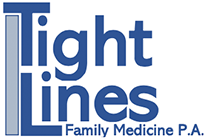It is normal to feel down once in a while when nothing really seems to be getting you in a better mood. Have you noticed though that winter blues come around more often with the seasons that have less sunlight to offer to us?
What are winter blues and SAD?
Experts believe that the lack of sunlight upsets our body’s biological clock and can affect levels of serotonin—a chemical in the brain that affects mood. SAD is more likely to occur in women than in men, and younger people are more at risk than older adults. Other risk factors include a family history of SAD, having clinical depression, and living far from the equator.
The symptoms of winter blues and SAD can begin with the fall season and go into winter when the symptoms worsen. It is almost like a feeling of major depression.
To help you identify if you might be going through seasonal depression I will list some of the symptoms to look out for:
- Irritability
- Low energy
- Appetite changes
- Weight gain
- Moodiness and anxiety
- Oversleeping but still feel tired
- Loss of interest in normal activities
What can we do better to allow these discomforts to flow through us?
Regular exercise is one of the best things you can do to offset the winter blues. Better yet, exercising outdoors will expose you to natural light—so exercise in the early part of the day when the sun is shining is best. Being more active will help you have more energy and feel less depressed. It will also help you sleep better. Allow yourself to take a nap if you don’t sleep well.
You can meditate or simply just find a cozy quiet corner and be with your beautiful self for some time. Give yourself a hug. Tell yourself how much you care. No one’s love can compare to the love you already carry inside of your own body.
Remember it. Honor it. Nourish it.
If you need help while going through the gray days, contact us and we will be glad to guide you.
To your health,
Team at Tight Lines

* The content presented here is for your information only. It is not a substitute for professional medical advice, and it should not be used to diagnose or treat a health problem or disease.
References: “Seasonal Affective Disorder.” MedlinePlus. U.S. Department of Health and Human Services, 06 Jan. 2016. Web. 13 Jan. 2016. <https://www.nlm.nih.gov/medlineplus/seasonalaffectivedisorder.html> “Seasonal Affective Disorder (SAD).” Mayo Clinic. Mayo Foundation for Medical Education and Research, 12 Sept. 2014. Web. 13 Jan. 2016. <http://www.mayoclinic.org/diseases-conditions/seasonal-affective-disorder/basics/definition/con-20021047> “Seasonal Affective Disorder.” WebMD. WebMD, n.d. Web. 13 Jan. 2016. <http://www.webmd.com/mental-health/tc/seasonal-affective-disorder-sad-topic-overview>
